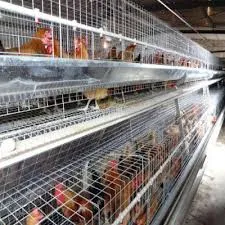fish feed milling machine
Oct . 12, 2024 14:24 Back to list
fish feed milling machine
Understanding Fish Feed Milling Machines A Key to Sustainable Aquaculture
As the demand for fish and other aquatic products continues to rise globally, the aquaculture industry is experiencing unprecedented growth. A crucial element of this growth is the production of high-quality fish feed, which is essential for the healthy growth and sustainability of fish farms. At the heart of this feed production process are fish feed milling machines, which play a vital role in transforming raw ingredients into nutritionally balanced pellets suitable for various fish species.
Fish feed milling machines are designed to process a variety of materials, including grains, fish meal, and vegetable proteins, into a form that is easy for fish to digest and absorb. The milling process involves several steps grinding, mixing, conditioning, and pelleting. Each step requires precision and efficiency, as the nutritional quality of the feed directly influences fish health and growth rates.
Grinding and Mixing
The first step in the milling process is grinding, where raw materials are reduced to a fine powder. This is typically achieved using hammer mills or roller mills, which ensure the consistency of particle size. A uniform particle size is crucial, as it promotes better mixing and prevents the feed from being segregated after production. Once the materials are ground, they are mixed thoroughly to ensure a balanced formulation that meets the specific dietary needs of the target fish species.
Conditioning
Following mixing, the feed blend undergoes conditioning. This step involves adding steam and heat to the mixture, which not only helps to kill any harmful pathogens but also improves the digestibility of the feed. The conditioning process also prepares the feed for pelleting, where the materials will be formed into pellets under controlled pressure and temperature. The quality of the conditioning process can significantly affect the durability and water stability of the final pellets, ensuring they remain intact during storage and feeding.
fish feed milling machine

Pelleting
The pelleting stage is where the magic happens. The conditioned feed is pushed through a pellet die, forming it into small, cylindrical shapes. The diameter and length of the pellets can be adjusted according to the specific requirements of the fish being farmed. High-quality pellets have a smooth surface and a uniform shape, which not only enhances their attractiveness to fish but also minimizes waste. Additionally, the pelleting process can improve the feed’s nutritional value by making it more bioavailable.
Importance of Technology and Innovation
In recent years, advancements in technology have led to the development of more efficient and environmentally friendly fish feed milling machines. Innovations such as automated controls and energy-efficient designs have reduced production costs and minimized waste. Furthermore, the integration of smart technologies allows for better monitoring of the milling process, ensuring consistent quality and performance.
Conclusion
In conclusion, fish feed milling machines are indispensable for the aquaculture industry, as they directly impact fish health, growth, and overall farm productivity. As the industry continues to evolve, embracing technological advancements will be essential for producing high-quality feeds that meet the growing global demand for fish. Sustainable aquaculture practices, supported by efficient milling processes, can ensure that we meet the needs of future generations while preserving our aquatic resources.
-
Hot Sale 24 & 18 Door Rabbit Cages - Premium Breeding Solutions
NewsJul.25,2025
-
Automatic Feeding Line System Pan Feeder Nipple Drinker - Anping County Yize Metal Products Co., Ltd.
NewsJul.21,2025
-
Automatic Feeding Line System Pan Feeder Nipple Drinker - Anping County Yize Metal Products Co., Ltd.
NewsJul.21,2025
-
Automatic Feeding Line System - Anping Yize | Precision & Nipple
NewsJul.21,2025
-
Automatic Feeding Line System - Anping Yize | Precision & Nipple
NewsJul.21,2025
-
Automatic Feeding Line System-Anping County Yize Metal Products Co., Ltd.|Efficient Feed Distribution&Customized Animal Farming Solutions
NewsJul.21,2025






